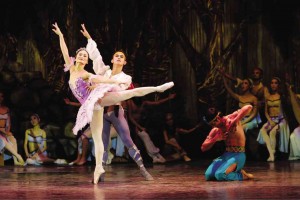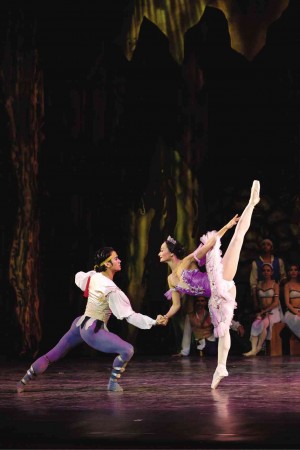Ballet Manila finds ways to land on its feet
How much does a quality production by a major ballet company cost?
“A typical production costs between P350,000 to P1,000,000 depending on whether it is a world premiere or a revival,” says Bugs Bunao, marketing director of Ballet Manila (BM), one of three major ballet companies in the city, the others being Ballet Philippines and Philippine Ballet Theater.
BM’s artistic director is prima ballerina Lisa Macuja who recently, in her “swan song” series, bade adieu to performing, at least as far as demanding lead roles are concerned.
“Costs depend as well on the choreographer—local and international,” adds Bunao. “You also have to factor in rights and royalties, in addition to all the standard production expenses.”
The performances of Ballet Manila at the large Aliw Theater in the CCP Complex, Pasay City, always attract a fairly large crowd, including many families and students, thanks to free rides after the show, marketing know-how, and the brilliant performances of the prima ballerina.
Will the crowds still go there with Macuja in semiretirement?
The marketing officer fairly bristles at the question.
“BM is Lisa and Lisa is BM,” she declares. “I think it is a misnomer to say that people only come to BM to see Lisa. Our 19th season proved that. Our last Swan Lake series was the highest grossing (via ticketworld) full-length ballet series, and Lisa was not dancing in it.”
And Bunao turns to this writer: “You were present during our anniversary concert and can attest to its success. People will come to BM because Lisa is our figurehead … whether she is dancing or not. They equate her name with the high standard and quality of production that she has practiced all these years.”
Recouping investment
“Recouping investment is really a perspective issue, as with any performing or fine arts,” she opines. “Of course, if one person in the audience is touched, we have done our job, and the
investment is recouped. Financially, there is an effort to recoup investment by beefing marketing, seeking underwriters and sponsors, and making sure tickets are sold.”
When Ballet Manila started, “the goal was to have as many performances as possible so that we could collect as many performance fees that would be given to the dancers,” says Bunao. “We went outside of Manila, all over the Philippines and even internationally, almost became a touring group so that we could get as many performances as possible.”
They performed in remote places and schools, entered into partnerships with different academic institutions and created programming that was almost curriculum-based.
And through the years, the program expanded, and BM affiliated with different organizations and businesses to create a program (classical and modern, western as well as Filipino) that would attract nontraditional audiences and regular ballet goers.
Cycles, challenges
“BM’S financial situation—again much like any other performing arts organization—has cycles,” says the marketing director. “Sometimes it is great. Often it is not. Traditionally, ticket sales only account for 30-40 percent of a performing company’s overall budget. However, because there is no government funding and support, or a regular national grant-making body, performing companies have to make do.”
As far as BM is concerned, the number one goal is the welfare of the dancers.
“So for every performance fee derived from ticket sales, majority of that goes to the dancers, and very little goes back to Ballet Manila,” notes Bunao.
Thus, she says, the company’s “financial situation is always in a constant challenge. We strive to have as many performances as possible so we can survive. Going forward, the idea is to be able to find or secure other avenues for financial support, corporate sponsorships, private donations, government funding, fundraising and the like.”
So, has it all been worth it?
“It will always be worth it,” Bunao declares. “At the end of the day, everyone in Ballet Manila, including the marketing department, subscribes to the vision of ballet as accessible to as many people as possible. Having said all that, it is also very important to note that, as marketing people, we are only as good as the curator and programmers of our season. We are fortunate to be led by artistic directors who come up with programming that excites the community.”



